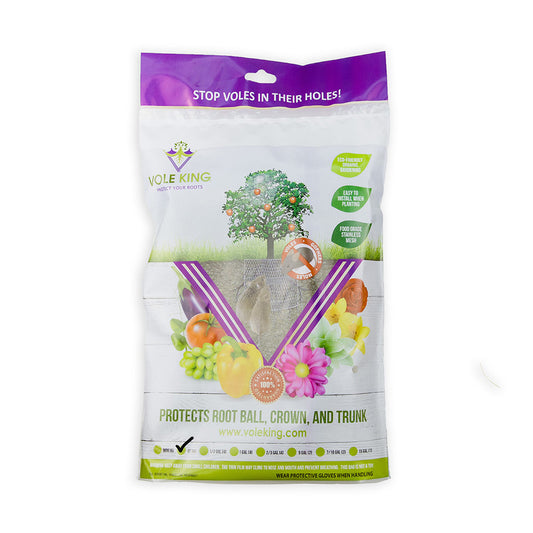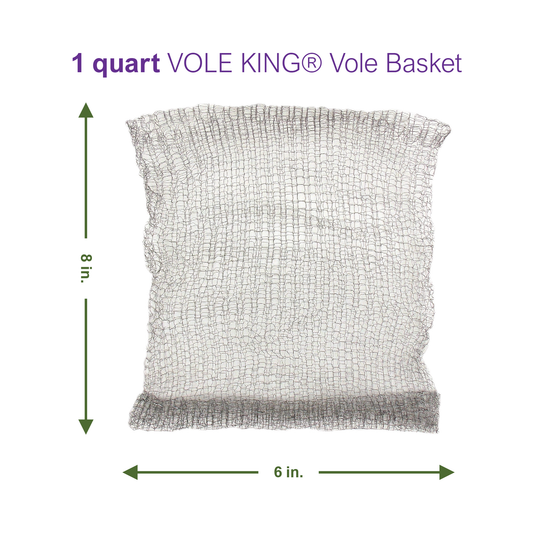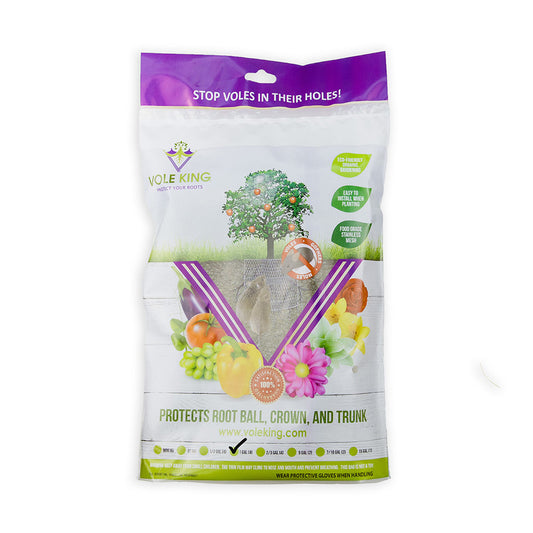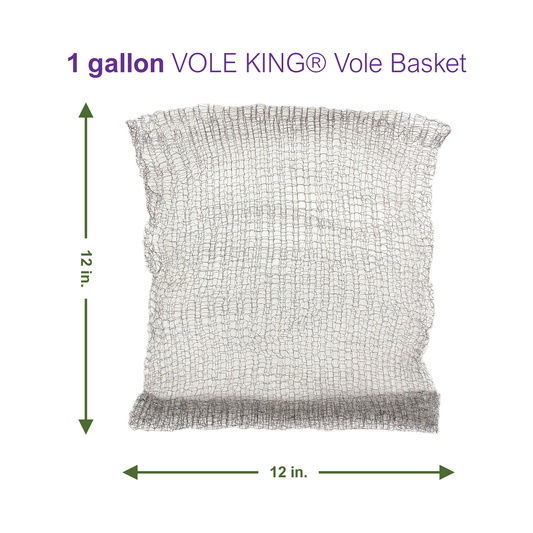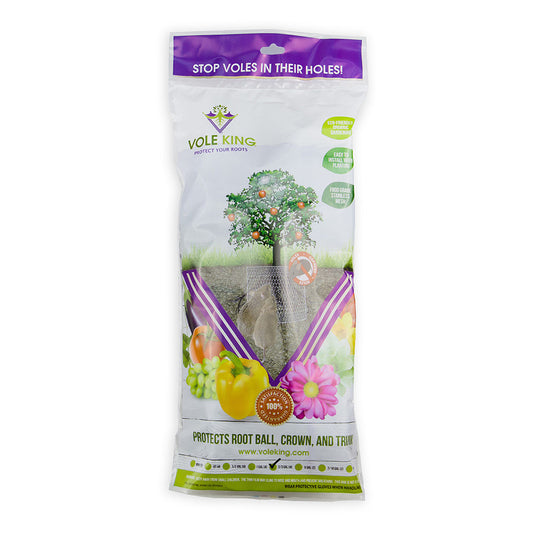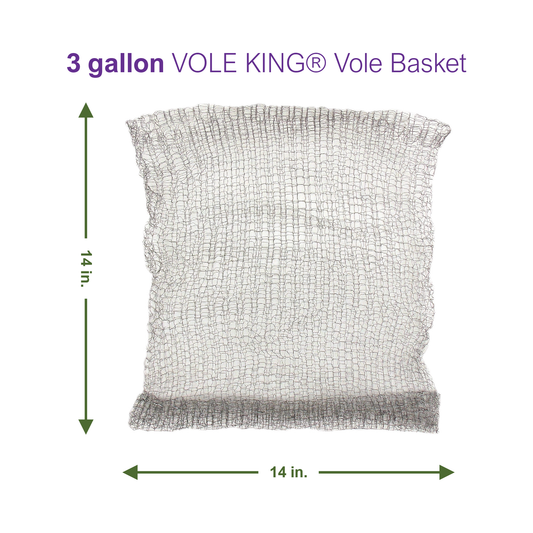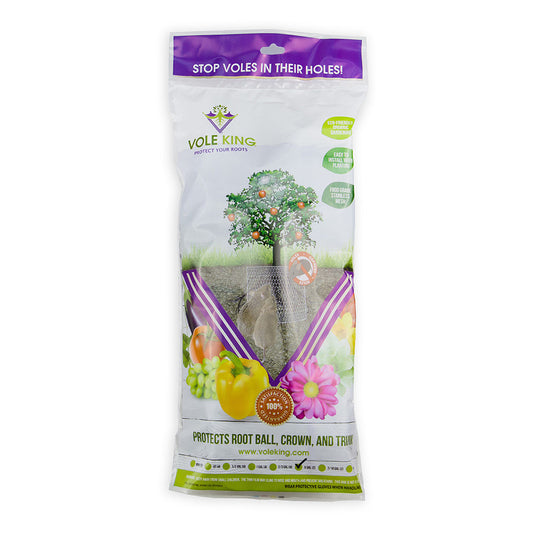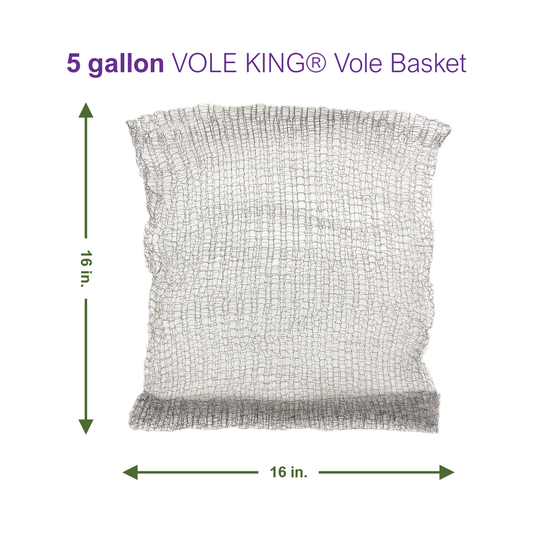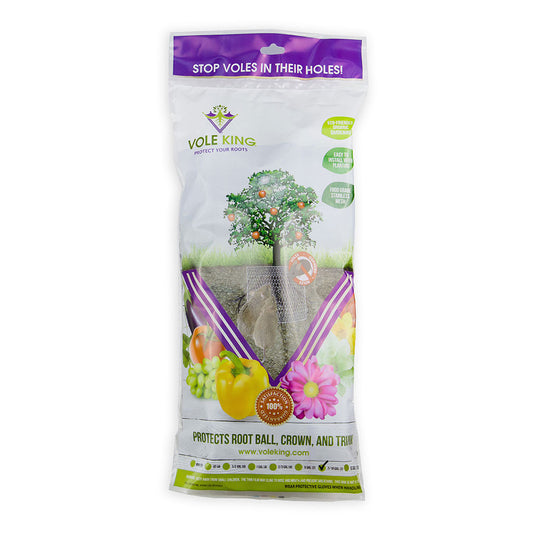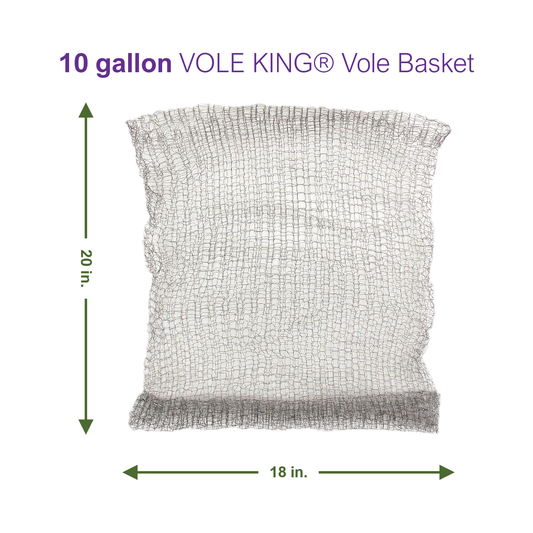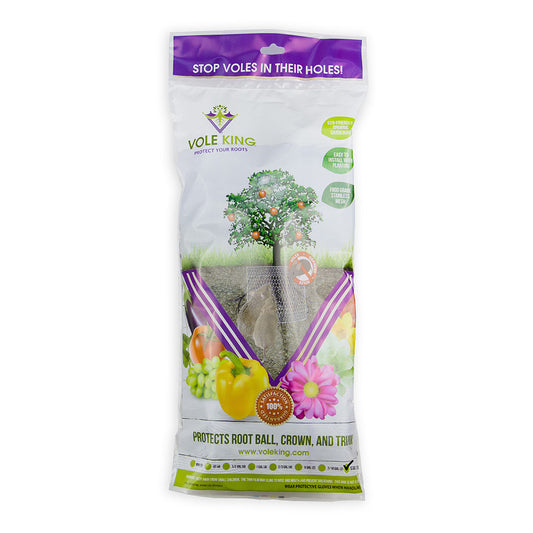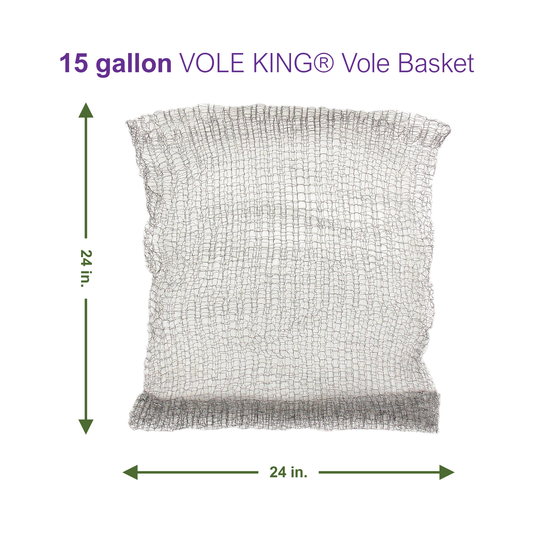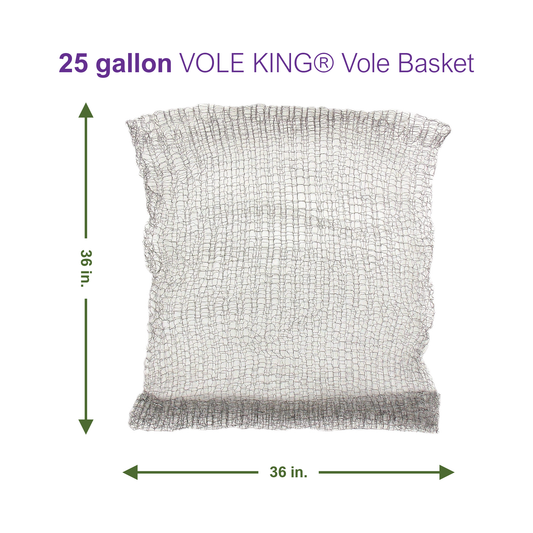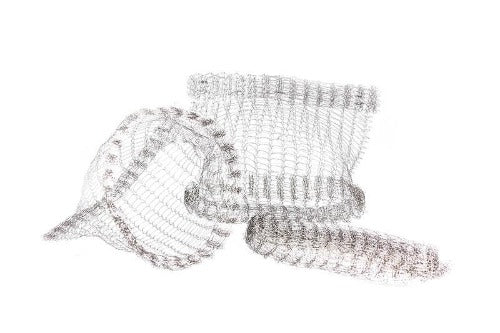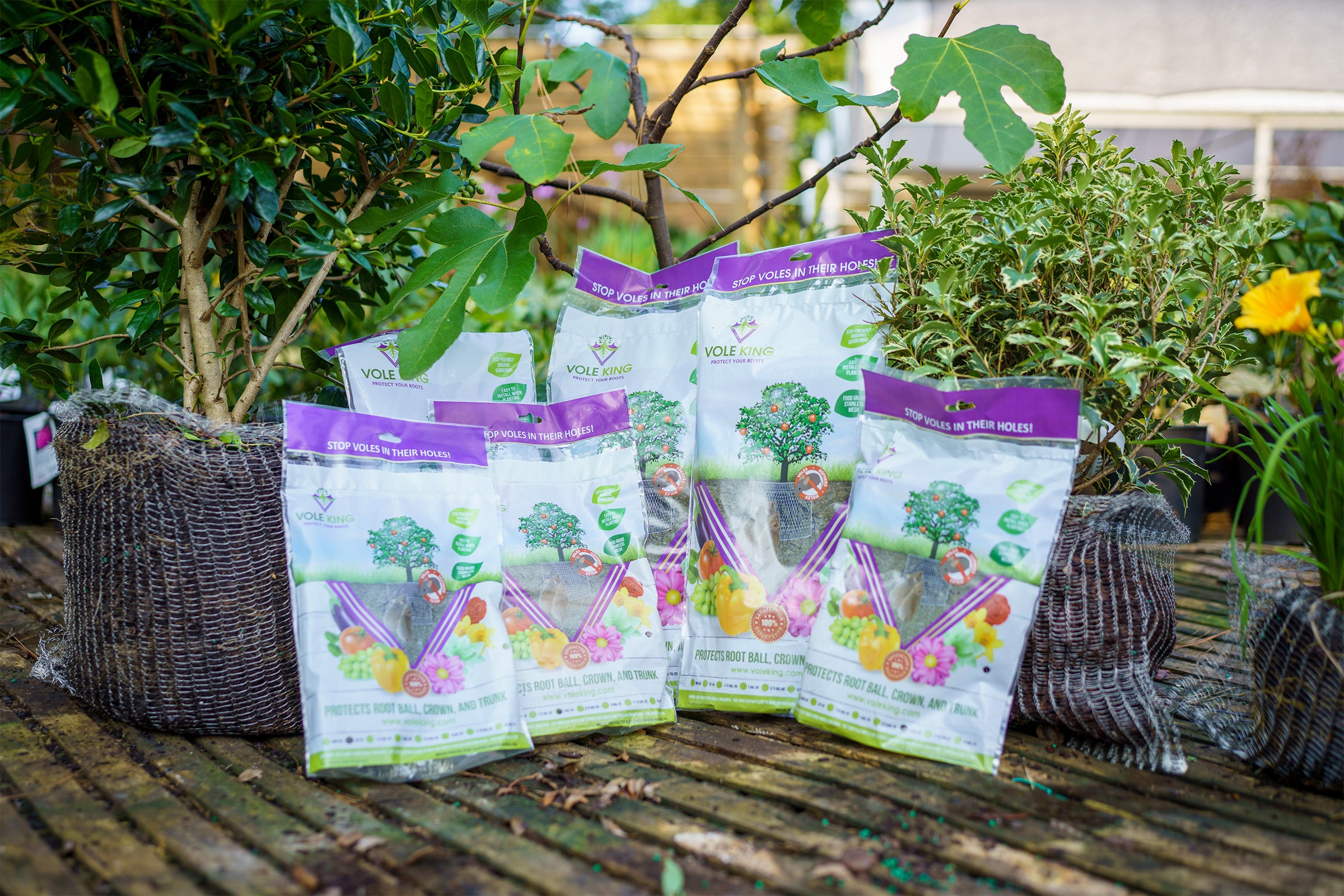
Protect a plant for life in less than one minute.
Vole King is the only "one and done" plant protection product. It takes less than one minute to roll a basket around a plant's root ball.
Vole King's stainless steel mesh baskets protect your plant's crown — that's the part of your plant where its roots meet its shoots. Your plant's roots can grow through the mesh, but burrowing rodents can't chew through it.
Our baskets easily conform to new plants and old transplants, so it's never too late to protect your plants with Vole King. Are burrowing rodents ruling your garden? Our baskets will help you reclaim your reign.
See what gardeners are saying.
-
"I planted several hostas around my house. The ones I planted without Vole King are dying, but the ones I planted with Vole King are thriving!"
— Susan J. (5-star review)
-
"We lost a lot of plants to voles and gophers before we found Vole King. Their stainless steel baskets don't rust like those chicken wire baskets."
— Bryant C. (5-star review)
-
"Just what I needed! After trying to make baskets myself, I searched for premade baskets and found Vole King. So easy to use and just the right size!"
— Dianne K. (5-star review)
1
/
of
3
Shop our best-selling vole baskets.
Not sure which size is best for your plant? Read this short blog post before you buy.
-
1-quart Vole Basket (pack of 4 baskets)
Regular price $14.99Regular priceUnit price / per -
1-gallon Vole Basket (pack of 4 baskets)
Regular price $16.99Regular priceUnit price / per -
3-gallon Vole Basket (pack of 4 baskets)
Regular price $26.99Regular priceUnit price / per -
5-gallon Vole Basket (pack of 2 baskets)
Regular price $16.99Regular priceUnit price / per -
10-gallon Vole Basket (pack of 2 baskets)
Regular price $21.99Regular priceUnit price / per -
15-gallon Vole Basket (pack of 1 basket)
Regular price $17.99Regular priceUnit price / per -
25-gallon Vole Basket (pack of 1 basket)
Regular price $24.99Regular priceUnit price / per -
Bulk Quantities (25, 50, or 100 vole baskets)
Regular price From $73.99Regular priceUnit price / per
1
/
of
8
